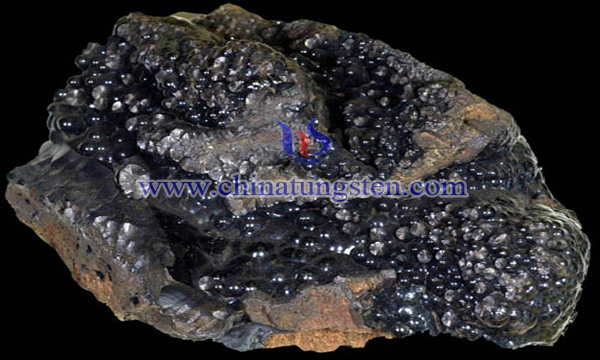Abstract Tungsten from Tungsten Oxide Limonite
- Details
- Category: Tungsten Information
- Published on Friday, 27 July 2018 09:05
Tungsten oxide limonite is a multi metal component, containing tungsten oxide 0.3%-0.6%, iron 26%-31% and other elements such as silicon, aluminum and calcium. It is difficult to be separated and enriched by traditional ore dressing method, it can not be enriched in high grade like other tungsten ores. At present, the ore can only be used as the raw material for cement production. A large amount of precious metal tungsten is irreversibly disappearing in building materials.

The traditional method of refining tungsten oxide limonite has high energy consumption in the production process. Some scholars have proposed a low cost process, short and pollution-free, wet smelting method, which can save the low grade tungsten ore, which is disappearing in a large amount. The following process is as follows:
(1) The brown iron ore containing tungsten oxide 0.1%-0.6% is crushed into less than 5mm particles through a sanding machine, and then the particles are sent to the separator at 1:10 and in the water at 1:10, then into the coarse concentrate of the tailings and tungsten. The tailings are used as the raw materials for cement production and the tail water is recycled.
(2) The mixed mass ratio of the enriched tungsten concentrate with sodium carbonate, calcium oxide and anthracite is 20:0.8:0.3:1, it is roasted for 10-15 minutes at 750-800°C, the roasted sintered body is cooled by air cooling, cooling and entering the mill, the size of reduced roasting powder above 120 orders is obtained.
(3) The leaching mother liquor was loaded in the soak tank, and the leaching mother liquor was mainly sodium hydroxide solution with mass percentage of 30%, with 2% hydrogen peroxide and 10% sodium chloride as the catalyst, the solid liquid quality was reduced to 30 to 40 clocks at 90°C for 30~40 minutes by reducing the mass ratio of 1:2, then adding a proper amount of calcium chloride to stir 3-5min. When the mass percentage content of sodium tungstate in the filtrate is less than 30%, the filtrate is returned to the soak solution, and then the reduction roasting powder is supplemented in proportion, the leaching process is repeated for more than 10 times. Until the mass ratio of sodium tungstate in the filtrate is determined to be 30%-50%, the alkali is terminated. After leaching, the filter cake is cleaned with water, and the cake washing water is returned to the leaching tank, the slag washing is combined with the tailings to produce raw materials for cement production.
(4) The sodium tungstate solution was neutralized by chlorine or hydrochloric acid to pH8-9 to remove impurities such as sodium silicate.
(5) When the sodium tungstate solution after impurity is diluted to 20%-40% of sodium tungstate, the reaction, crystallization and filtration of calcium tungstate and filter tail water are added to the reaction, crystallization and filtration of calcium chloride solution according to the theoretical amount of the reaction required by the content of tungsten acid root ion.
(6) The filtered tail water is sodium chloride solution, which uses the hot air produced by the heat exchange of the air cooling of the sintered body to dry and crystallize. After the evaporation, the water vapor is collected and used as the liquid solution for the leaching mother liquor, the obtained crystallization is used as the industrial sodium chloride.
Due to the complex form of tungsten in limonite, it belongs to the mixture of scheelite and wolframite, it exists in the form of compound salt under the action of crystal water. Adding reductant sodium carbonate, calcium oxide and anthracite in the environment of 750~800°C, the reductant can break the structure of the composite salt of tungsten and reduce the sintering temperature, which is beneficial to the formation of tungstate.
- Tungsten Manufacturer & Supplier, Chinatungsten Online: www.chinatungsten.com
- Tungsten News & Prices of China Tungsten Industry Association: www.ctia.com.cn
- Molybdenum News & Price: news.molybdenum.com.cn
- Tel.: 86 592 5129696; Fax: 86 592 5129797; Email: sales@chinatungsten.com



 sales@chinatungsten.com
sales@chinatungsten.com